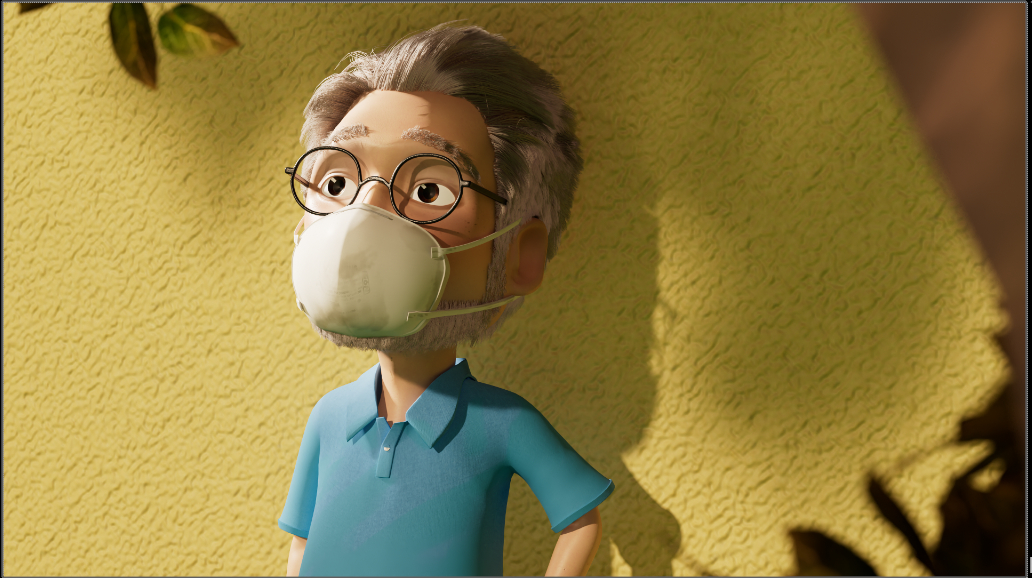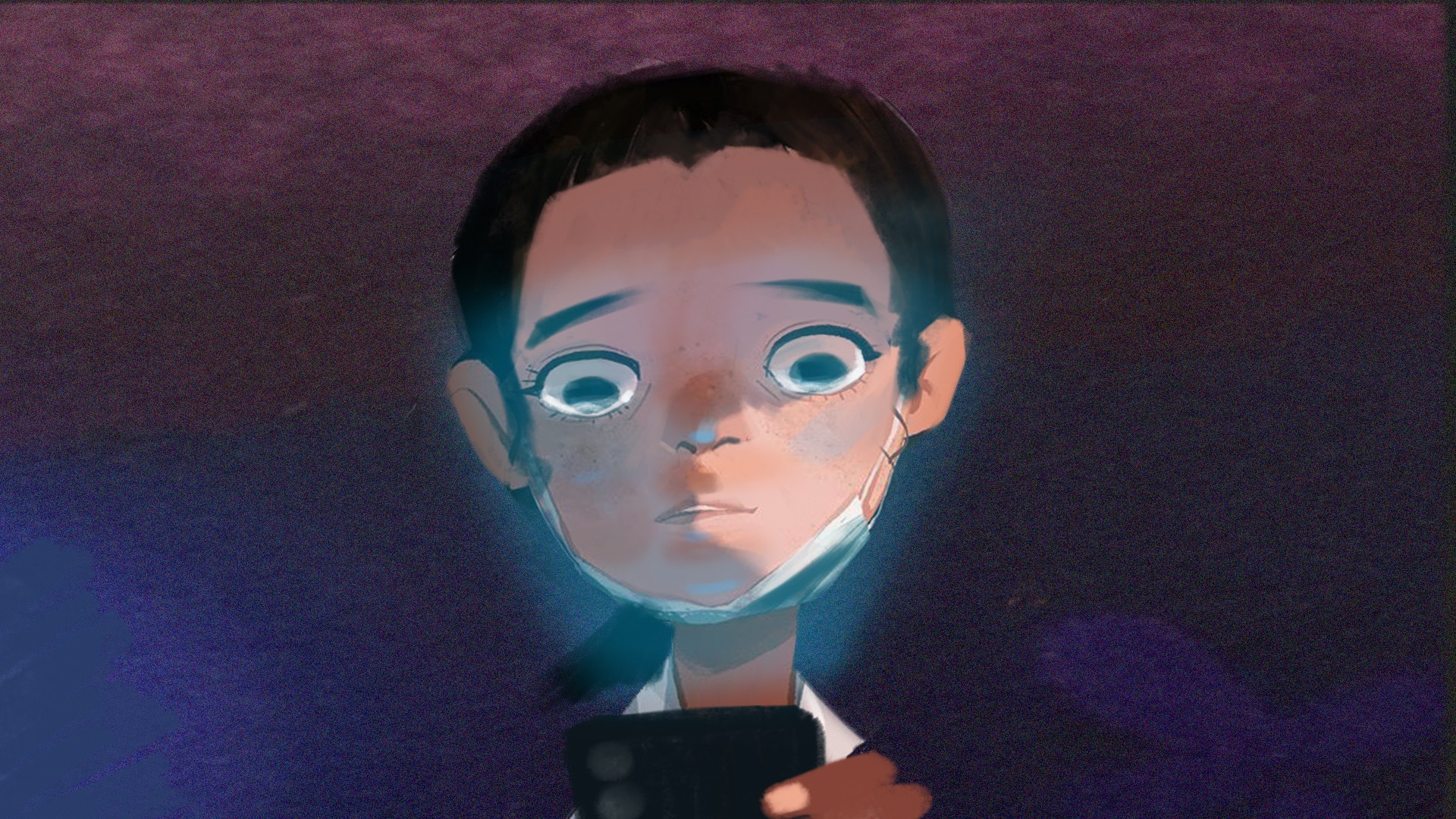Alright – so today we’ve got the honor of introducing you to Zixin Yang. We think you’ll enjoy our conversation, we’ve shared it below.
Zixin, thanks for taking the time to share your stories with us today Can you talk to us about a project that’s meant a lot to you?
“Lingering Summer Day” is my master’s thesis project. It tells the story of my final meeting with Professor Gary Schumer, my first 2D animation teacher. He was the one who helped me build confidence, little by little, and ultimately gave me the courage to pursue a career in animation—and even dream of becoming a director. He showed me the kind of genuine compassion and encouragement that an international student rarely receives. This film is dedicated to him—an ordinary man who was also an extraordinary animator and teacher.
Through this animation, I want to preserve all the precious memories I shared with him, and help others remember their own. The story is not only about honoring a beloved teacher, but also about how we, as human beings, cope with sadness and loss—especially during traumatic events like the pandemic. I was stunned by how quickly people began to forget that the pandemic even happened—and even more so, how quickly some of his students seemed to forget him. I realized that we often protect ourselves by forgetting, pushing painful emotions away as a survival instinct. But I believe that in facing sadness, the real colors of memory begin to shine through—warm, yet fleeting.
The animation will be primarily 3D, with hand-painted textures for the characters and realistic environments. It will include moments of stop-motion and live-action footage, especially to evoke shared memories from Gary’s former students at Ringling.
The first film I ever made—for my bachelor’s degree—was about COVID. It featured a little bat whose life was forever changed by the pandemic, and who realized that not only is COVID a virus, but so is hate. That film came from my experience with anti-Asian hate crimes, and it carried a heavy, negative tone. Looking back, I wasn’t happy with it. I was trying to convince people of something painful—that hate changes lives—but I wasn’t being fully honest with my own feelings.
I later realized that the bat wasn’t truly me. The deeper truth was that I had experienced a painful loss during the pandemic. But it was too much to say, too much to show. I locked that memory in a dusty box. I didn’t notice at the time that I’d also locked away something warm and beautiful inside that same box.
Years later, after the world moved on and masks came off, I joined a summer camp program where instructors were asked to share something important in their lives. At first, I laughed at how broad that question was—until one image flashed clearly in my mind: white hair, glasses, a polo shirt… and a curtain, dancing in the wind. That afternoon, when Gary showed us that video, I felt like I was flying between that curtain, his smile, and his peaceful eyes. In a stressful place like Ringling, a peaceful afternoon was the most luxurious thing you could have.
So, I told the story of how I met Professor Gary, and how I didn’t realize our last meeting was the last until I got the news: COVID had taken him away. But I still remember he said to me, “You’re going to become a star.”
I hadn’t realized I was crying as I told the story—until I looked up and saw that almost everyone else was crying too. That summer camp ended quickly, and my students were happy to be going home, until they read the letters I wrote for them. I felt a little bad for making them cry again, but all I did was repeat what Gary once said to me: “I hope you all become a star in your life.”
I guess that’s when I opened the dusty box. And inside, I found what was shining.
When I got another chance to create a thesis film, I knew I wanted to explore how we try to protect ourselves by pushing sadness away. In my case, that meant forgetting my memories of Gary. But burying sadness doesn’t make it disappear—it just hides the treasure with it. So I opened that box again. And inside, I found the most important gift of my life.
I hope that through this film, people will find the courage to open their own boxes. To face their sadness, and find the treasures hidden within. Most of all, I hope they remember the people who mattered—and appreciate them while they still can.
I believe if Gary knew he was the main character of an animated film, he would be happy. When a film is dedicated to someone, the director’s vision becomes a kind of tribute, a love letter. That’s exactly what this is—my final letter of appreciation to Professor Gary. I simply want to preserve the most meaningful moments I shared with him. I chose to unlock the box and revisit those memories, knowing they’ll slowly fade with time. But the safest way to preserve them… is to share them. To tell everyone about him. To make a film about him. So that even fifty years from now, even if I one day forget everything else, if I get Alzheimer’s… maybe this film will help me remember. Maybe a part of me always will.

Awesome – so before we get into the rest of our questions, can you briefly introduce yourself to our readers.
I’m an animator and story creator, and I also teach animation—mainly helping students get started with the basics. But at the heart of it, I see myself more as a storyteller and creator than just a teacher.
I got into animation because of my dad. He was an artist—originally a performance artist—then he started making comics. I always wanted to bring his comics to life, to make them move. That was the beginning. I also watched a lot of anime and movies growing up, which really shaped my sense of aesthetics and imagination. I dreamed of having a friend from an animated world, of stepping into a place full of wonder and emotion. What mattered to me most in those stories was the love and message they expressed. Made my childhood full of passion and courage and made me want to be kind.
I’ve always had this powerful urge to express kindness and caring and to let the world feel it too. I think that’s one of the most important qualities an artist should have—and also a responsibility. I don’t create to show off how “unique” I am. I just want to share feelings and stories I imagine and I simply love art, which could communicate across different cultures and races. For me, it’s not about being different—it’s about emotional connection.
Right now, I offer character animating and lighting services for different projects and clients, but I especially love drawing storyboards and helping with story development. I love discussing ideas, characters, emotions, and how to use things like lighting to express a scene’s mood. I help people figure out how to make their characters more three-dimensional and how to make their stories feel more honest and emotionally powerful while remaining entertaining.
What I’m most proud of? Honestly, my students. They love me, and I love them. Being an instructor brings me more satisfaction and inspiration than I can imagine. That connection means everything to me. I also once saved a kid at a ski resort, which was a huge moment in my life. And in terms of animation itself—my first short film, even though it was kind of rough around the edges, got selected by two film festivals. That gave me a lot of confidence to keep going.
What sets me apart? I think… it’s just that I’m me. I’m not replaceable. I’m deeply loved by the people I care about, and that love shapes me into someone who’s kind and full of warmth toward the world. I don’t want to feel “special” in a proud way—I want to stay soft and open-hearted.
If I had to name a professional strength, it would be my strong emotional sensitivity and my eye for storytelling. I can often help others reconnect with what’s real in their stories. I’ve watched a huge amount of films and anime and experienced quite a lot from traveling to different countries and studying there. So I can offer both grounded and fresh perspectives.
More than anything, I hope the people I work with will truly value my input on the story. I’d love for them to talk to me more about the emotional core of what they’re making, and trust me not just as someone who can get the job done, but as someone who deeply cares about what the story is trying to say.

What do you find most rewarding about being a creative?
For me, the most rewarding part of being an artist is when I feel that my emotions have truly reached someone else—when something I’ve created makes someone pause, feel something real, or feel understood. That moment of connection, even if it’s quiet or invisible, is everything.
I think I make art because I have so much love inside me, and creating is my way of expressing it. So when that love actually lands somewhere—when someone tells me a story I made, moved them, or even when I just see it in their eyes—that’s the moment I feel, “Yes, this is why I do this.”
It’s not about fame or being seen as unique. It’s about sharing. Feeling less alone. Making someone else feel less alone and remembering their connections. And sometimes, when I’m really lucky, it’s about creating something that brings a little more tenderness or light into someone’s world.

Do you think there is something that non-creatives might struggle to understand about your journey as a creative? Maybe you can shed some light?
I think one thing non-creatives might struggle to understand is how deeply personal and emotional the creative process is. It’s not just “making something pretty” or “coming up with ideas”—it’s often about digging into your own heart, your past, your pain, your joy, and trying to shape that into something you can give to the world.
There’s a vulnerability in that. When I share my work, especially stories that mean a lot to me, it can feel like I’m standing there emotionally exposed—like I’ve ripped open my chest and handed someone my heart. And when people dismiss it, rush it, or treat it like it’s just a “task” to get done… that can really hurt, even if I try to stay professional.
Another thing that’s hard to explain is how much invisible thinking goes into creative work. A lot of the time we’re just sitting there, staring into space—but we’re actually solving problems, imagining possibilities, or listening to what a story or character needs to say. That part of the process is just as important as the technical skills.
So if I could offer any insight—it would be this: creating isn’t just a job. For many of us, it’s a form of survival. It’s how we process the world, how we heal, how we love. That doesn’t mean we can’t be professional, responsible, or organized—but it does mean we need to be treated with empathy. Because behind every beautiful drawing or scene or film… there’s usually a whole heart behind it. But I believe we can make people feel it.
Contact Info:
- Instagram: https://www.instagram.com/kara_yang1022/
- Linkedin: https://www.linkedin.com/in/zixin-yang-18951022skl/

Image Credits
All photos belong to Zixin Yang, and feel free to use them in your articles. Thank you so much.


